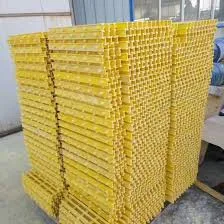
-
 Afrikaans
Afrikaans -
 Albanian
Albanian -
 Amharic
Amharic -
 Arabic
Arabic -
 Armenian
Armenian -
 Azerbaijani
Azerbaijani -
 Basque
Basque -
 Belarusian
Belarusian -
 Bengali
Bengali -
 Bosnian
Bosnian -
 Bulgarian
Bulgarian -
 Catalan
Catalan -
 Cebuano
Cebuano -
 China
China -
 China (Taiwan)
China (Taiwan) -
 Corsican
Corsican -
 Croatian
Croatian -
 Czech
Czech -
 Danish
Danish -
 Dutch
Dutch -
 English
English -
 Esperanto
Esperanto -
 Estonian
Estonian -
 Finnish
Finnish -
 French
French -
 Frisian
Frisian -
 Galician
Galician -
 Georgian
Georgian -
 German
German -
 Greek
Greek -
 Gujarati
Gujarati -
 Haitian Creole
Haitian Creole -
 hausa
hausa -
 hawaiian
hawaiian -
 Hebrew
Hebrew -
 Hindi
Hindi -
 Miao
Miao -
 Hungarian
Hungarian -
 Icelandic
Icelandic -
 igbo
igbo -
 Indonesian
Indonesian -
 irish
irish -
 Italian
Italian -
 Japanese
Japanese -
 Javanese
Javanese -
 Kannada
Kannada -
 kazakh
kazakh -
 Khmer
Khmer -
 Rwandese
Rwandese -
 Korean
Korean -
 Kurdish
Kurdish -
 Kyrgyz
Kyrgyz -
 Lao
Lao -
 Latin
Latin -
 Latvian
Latvian -
 Lithuanian
Lithuanian -
 Luxembourgish
Luxembourgish -
 Macedonian
Macedonian -
 Malgashi
Malgashi -
 Malay
Malay -
 Malayalam
Malayalam -
 Maltese
Maltese -
 Maori
Maori -
 Marathi
Marathi -
 Mongolian
Mongolian -
 Myanmar
Myanmar -
 Nepali
Nepali -
 Norwegian
Norwegian -
 Norwegian
Norwegian -
 Occitan
Occitan -
 Pashto
Pashto -
 Persian
Persian -
 Polish
Polish -
 Portuguese
Portuguese -
 Punjabi
Punjabi -
 Romanian
Romanian -
 Russian
Russian -
 Samoan
Samoan -
 Scottish Gaelic
Scottish Gaelic -
 Serbian
Serbian -
 Sesotho
Sesotho -
 Shona
Shona -
 Sindhi
Sindhi -
 Sinhala
Sinhala -
 Slovak
Slovak -
 Slovenian
Slovenian -
 Somali
Somali -
 Spanish
Spanish -
 Sundanese
Sundanese -
 Swahili
Swahili -
 Swedish
Swedish -
 Tagalog
Tagalog -
 Tajik
Tajik -
 Tamil
Tamil -
 Tatar
Tatar -
 Telugu
Telugu -
 Thai
Thai -
 Turkish
Turkish -
 Turkmen
Turkmen -
 Ukrainian
Ukrainian -
 Urdu
Urdu -
 Uighur
Uighur -
 Uzbek
Uzbek -
 Vietnamese
Vietnamese -
 Welsh
Welsh -
 Bantu
Bantu -
 Yiddish
Yiddish -
 Yoruba
Yoruba -
 Zulu
Zulu
Understanding Drill Rod Connections Key Concepts for Efficient Drilling Operations
Understanding Drill Rod Connections The Basics
Drill rod connections play a critical role in drilling operations across various industries, including mineral exploration, construction, and oil and gas extraction. Understanding the fundamentals of these connections can significantly impact the efficiency and safety of drilling processes.
At its core, a drill rod connection serves as the link between individual rods that make up the drilling string. These connections are vital, as they must withstand the immense stresses associated with drilling, such as high torque, bending forces, and axial loads. Consequently, the design and integrity of these connections are paramount for operational success.
One common type of connection is the threaded joint, where the ends of adjacent rods are fitted with male and female threads. This design allows for a secure and tight fit, minimizing the risk of disengagement during drilling operations. Threaded connections are typically classified into two categories API (American Petroleum Institute) and premium connections. API connections are standardized and widely used in the oil and gas industry, while premium connections offer enhanced performance through improved designs and materials, catering to specific drilling conditions.
drill rod connections understanding the basics and its

Another type of connection is the welded joint, which involves the fusion of two rod ends together. This method is often employed in applications where maximum strength and rigidity are required. However, welded joints can be more challenging to repair and may require specialized equipment. Therefore, they are less common in environments where frequent disassembly is necessary.
The materials used for drill rods also play a significant role in connection performance. Steel is the predominant material due to its strength and durability; however, advanced materials like alloyed steel and composites are increasingly being utilized to improve performance and reduce weight. The choice of material depends largely on the drilling environment, such as temperature, pressure, and the presence of corrosive substances.
Regular inspection and maintenance of drill rod connections are vital to ensure their integrity. This includes checking for wear and tear, corrosion, and any signs of fatigue. Implementing a robust maintenance schedule can help in identifying potential issues before they escalate, leading to safer operations and reduced downtime.
In conclusion, understanding drill rod connections is essential for anyone involved in drilling operations. The type of connection, materials used, and regular maintenance practices all contribute to the effectiveness and safety of the drilling process. As technology continues to evolve, advancements in drill rod connection designs and materials will pave the way for more efficient and sustainable drilling practices in the future. Prioritizing the integrity of these connections can lead to more successful drilling endeavors and a safer working environment.









